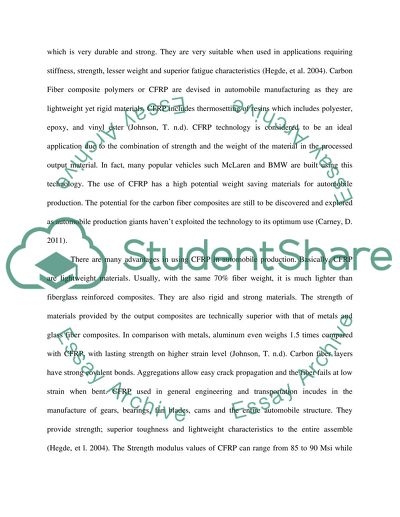Cite this document
(“Carbon-Fibre Composite Materials Coursework Example | Topics and Well Written Essays - 1250 words”, n.d.)
Retrieved de https://studentshare.org/engineering-and-construction/1631843-carbon-fibre-composite-materials
Retrieved de https://studentshare.org/engineering-and-construction/1631843-carbon-fibre-composite-materials
(Carbon-Fibre Composite Materials Coursework Example | Topics and Well Written Essays - 1250 Words)
https://studentshare.org/engineering-and-construction/1631843-carbon-fibre-composite-materials.
https://studentshare.org/engineering-and-construction/1631843-carbon-fibre-composite-materials.
“Carbon-Fibre Composite Materials Coursework Example | Topics and Well Written Essays - 1250 Words”, n.d. https://studentshare.org/engineering-and-construction/1631843-carbon-fibre-composite-materials.


